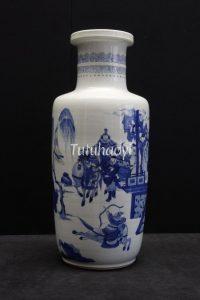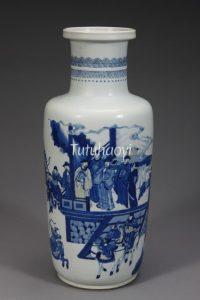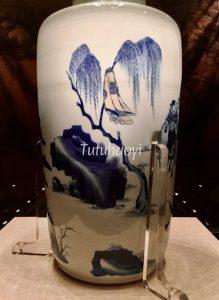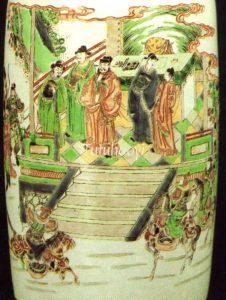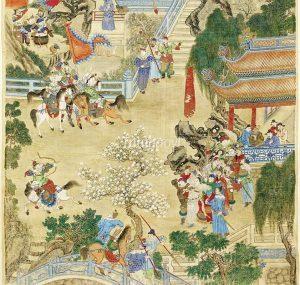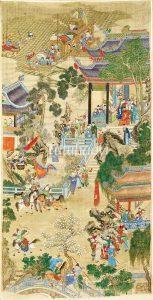Archery Contest at Bronze Sparrow Terrace
铜雀台比武
© Tutuhaoyi.com owns the copyright of the description content for the images attached. Quoting all or part of the description content on this page is permitted ONLY IF ‘Tutuhaoyi.com’ is clearly acknowledged anywhere your quote is produced unless stated otherwise. (本页描述内容版权归Tutuhaoyi.com所有,转发或引用需注明 “Tutuhaoyi.com”, 侵权必究, 已注开源信息的条目除外。)
This scene is taken from Vol. 24 of the 14th-century Chinese historical novel Romance of the Three Kingdoms (三国演义 Sanguo Yanyi).
In the 15th year of Jian’an (AD 210), Cao Cao (曹操) completed the construction of Bronze Sparrow Terrace in Ye City (modern-day Handan, Hebei Province, China). To celebrate, he hosted a grand banquet and organised an archery contest among his military officers. He ordered attendants to hang a red brocade war robe on a drooping willow branch, with a target set below and a shooting distance of 100 paces.
Cao Cao announced that whoever could hit the bullseye would be rewarded with the robe, while those who missed would be punished with a cup of plain water. Several officers successfully struck the bullseye, but then General Xu Huang (徐晃) declared, ‘Hitting the target is no big deal. Watch me claim the robe directly!’ He drew his bow, took aim at the willow branch, and, with a single shot, severed it cleanly, causing the robe to fall gracefully— an extraordinary feat later known as Xu Huang’s hundred-pace piercing of the willow.
story scene description by Rachel Ma
Other stories in the Romance of the Three Kingdoms:
Zhao Zilong’s solo rescue of Liu Bei’s infant son 赵子龙单骑救主
Liu Bei and Sun Quan chopping stone 刘备孙权砍石问天(孙刘试剑)
The Couple’s Tryst in the Phoenix Pavilion Making Dong Zhuo Fly into a Fury 董卓大闹凤仪亭
General Zhou Yu Flogging Huang Gai 周瑜打黄盖 (苦肉计)
Fig 1-2: porcelain rouleau vase with underglaze blue decoration, Kangxi period (1662–1722), Qing dynasty, courtesy of the Palace Museum, Beijing
Fig 3: close-up, porcelain rouleau vase with underglaze blue decoration, Kangxi period (1662–1722), Qing dynasty, courtesy of the Palace Museum, Beijing; photo: J P Kim
Fig 4: porcelain rouleau vase with overglaze enamelled decoration, Kangxi period (1662–1722), Qing dynasty, courtesy of The Burrell Collection, Glasgow, the UK
Fig 5: close-up, porcelain vase with overglaze enamelled decoration, Kangxi period (1662–1722), Qing dynasty, from Chinese Porcelain Decoration in the 17th and 18th Centuries, Yang, Enlin, Leipzig, 1987, Plate 15, p.142
Fig 6-7: hanging scroll, ink and colour on silk, anonymous, 19th century, courtesy of Christie’s Auction House, 13 Dec 2017, Lot 74
